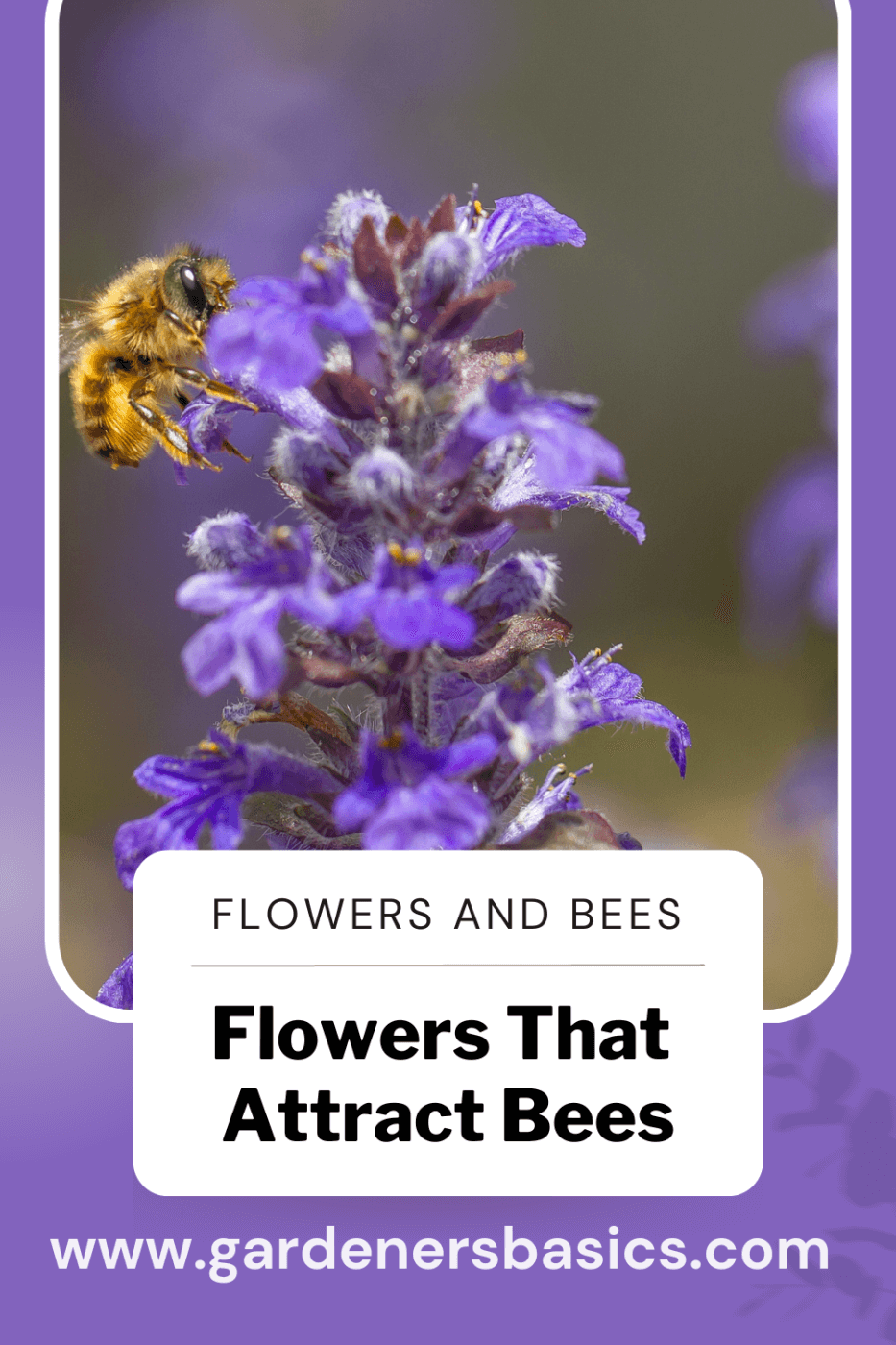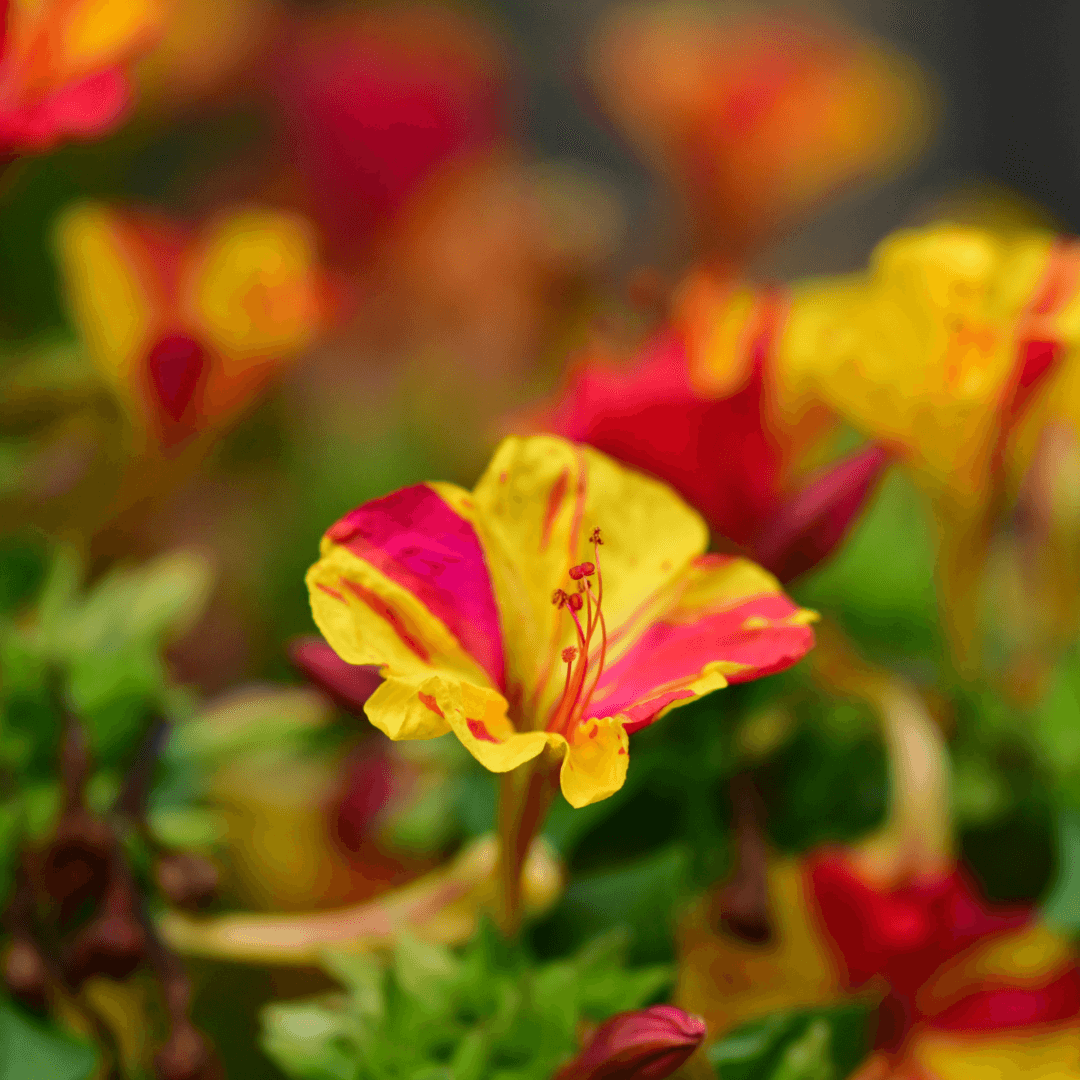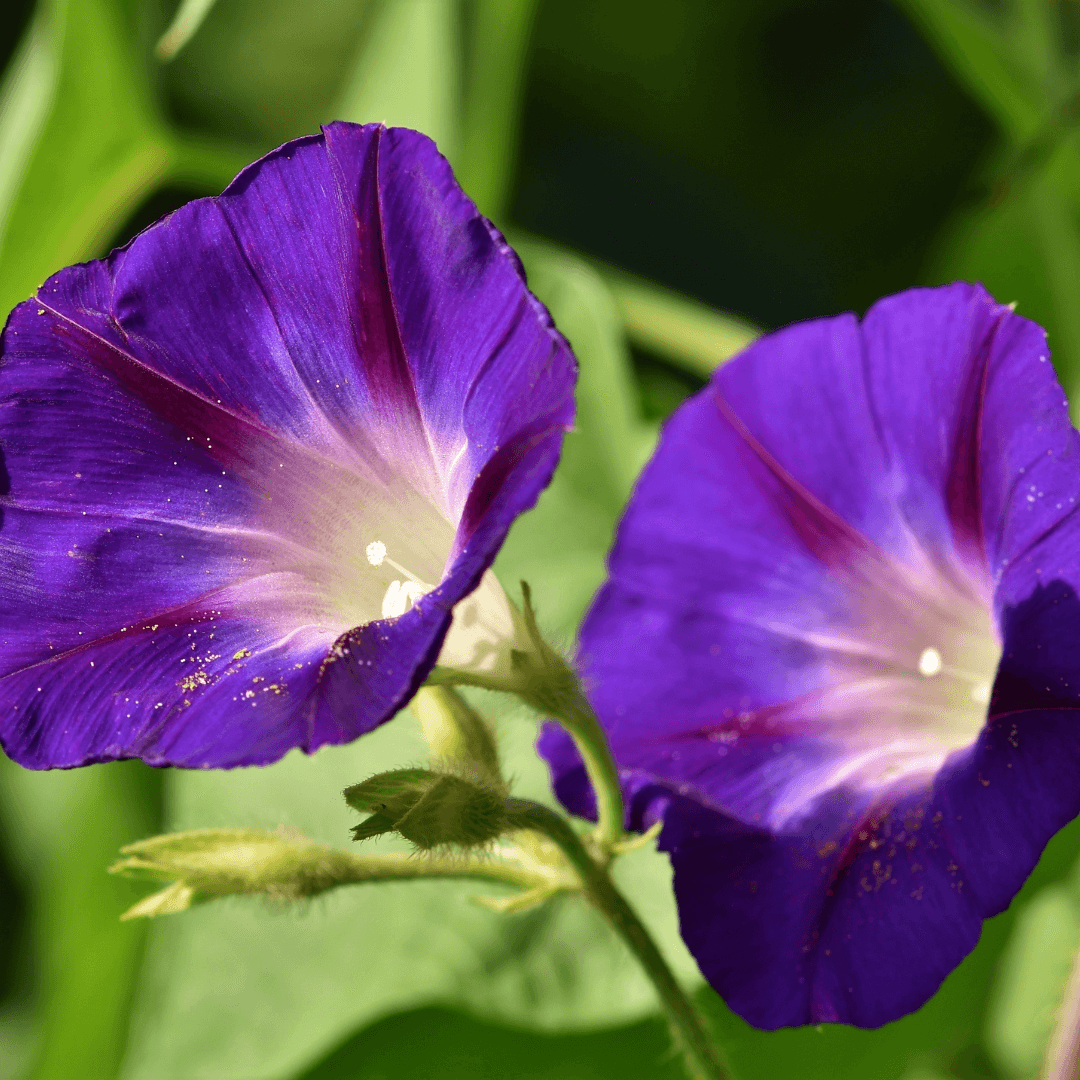Bees are essential to our ecosystem, playing a crucial role in pollinating various crops and wildflowers. In fact, according to the United Nations, bees pollinate 70% of the world's crops. Without bees, we would face significant food shortages and economic instability. Planting some of the best flowers for bees will help ensure your garden gets properly pollinated.
Pollination is the process by which pollen from male flowers is transferred to female flowers, resulting in fertilization and seed production. This process ensures that plants can reproduce and produce the fruits, vegetables, seeds, and nuts that comprise a large part of our diet.
Bees are one of the most effective pollinators due to their hairy bodies that carry pollen from flower to flower as they collect nectar. They also have specialized mouthparts that allow them to access deep nectar sources within flowers.
However, bee populations have declined rapidly due to habitat loss, pesticide use, parasites, and disease. This decline has led to concerns about food security and biodiversity loss.
The Role of Flowers in Providing Food for Bees
Flowers play a significant role in providing food for bees. The nectar flowers produce energy for bees while they collect pollen for their young ones back at their hives.
In addition to providing nutrition for adult bees during their short lifespan of about six weeks (or longer if they are queen bees), flowers also produce pollen rich in protein and fats necessary for developing bee larvae into adults. While many plants rely on wind or other animals such as birds or bats for pollination, flowering plants have evolved specific adaptations that attract bees with bright colors such as yellows or blues, along with fragrant oils which produce sweet scents - all signals used by bees that recognize these as good sources of food.
Bees have co-evolved with flowers which are essential for their reproduction. For example, some flowers have evolved to produce nectar that can only be accessed by bees with long tongues.
Conversely, bees have evolved the ability to detect the specific colors and patterns of flower petals that signal a valuable food source. Without flowers, there would be no food for bees, and without bees, many flowering plants would struggle to reproduce effectively, leading to ecosystem instability.
Bees play a vital role in pollinating our crops and wildflowers. However, their populations are declining due to habitat loss and other factors.
Flowers provide essential nutrition for bees while also benefiting from their pollination services. We can help support bee populations and enhance biodiversity in our local ecosystems by planting bee-friendly flowers in our gardens and landscapes.
General characteristics of flowers that attract bees
Bees attract flowers by combining visual, olfactory, and tactile cues. The most effective flowers for attracting bees share several key characteristics that make them highly visible and appealing to these essential pollinators.
Bright colors and patterns
Bees can see colors in the ultraviolet spectrum that humans cannot, drawing them to flowers with bright patterns and vivid hues. Flowers that have evolved to attract bees often have contrasting colors or bold markings, such as sunflower's dark center or lavender plant's bright purple petals.
This color contrasts help guide the bees towards the flower's nectar-rich center. Some species of bee are more attracted to specific colors than others.
For example, bumblebees are particularly drawn to blue and purple hues, while honeybees prefer yellow and orange shades. By planting various brightly colored flowers in your garden or yard, you can appeal to different bee species and increase overall pollination rates.
Sweet fragrance
The sweet scent of nectar is another essential characteristic that attracts bees to certain types of flowers. Many flowering plants emit fragrant oils or other chemical compounds that signal their presence from a distance, drawing bees closer for a taste of their abundant nectar.
Flowers with stronger scents tend to be more attractive to bees than milder fragrances. However, some types of bees may be more sensitive than others - for instance, honeybees have an excellent sense of smell, but bumblebees rely more on visual cues.
The abundance of nectar and pollen
Perhaps the most important feature for attracting bees is an abundance of nectar-rich rewards within a flower's petals. Bees rely on sugar-rich nectar as their primary energy source for flight and other activities, making it a crucial factor in survival.
Flowers that produce larger quantities of nectar are generally more attractive to bees than those with smaller amounts. Similarly, flowers containing high levels of protein-rich pollen are essential for bee larvae' development and can appeal to adult bees.
To maximize the appeal of your garden or yard for bees, choose various flowering plants that produce abundant nectar and pollen. This will help ensure a steady food supply for these vital pollinators throughout the growing season.
Top 5 Best Flowers for Bees
Bees play an essential role in pollination, and flowers are a crucial food source for bees. The best flowers for bees have bright colors, sweet fragrances, and abundant nectar and pollen. Here are some top flowers you can plant to attract bees to your garden.
Lavender
Lavender is a beautiful flower for bees due to its high nectar content and long blooming season. This fragrant herb produces blue or purple flowers that bloom from late spring through early fall.
Lavender is a hardy plant that can grow in various temperatures with well-drained soil. In addition to attracting honeybees and bumblebees, lavender also attracts butterflies.
Sunflowers
Sunflowers are beautiful and highly attractive to bees, attracting a variety of species. Sunflowers produce large flower heads with abundant pollen and nectar, making them an excellent choice for bee gardens.
These flowers bloom in late summer through early fall in warm climates. Growing sunflowers requires total sun exposure and well-drained soil.
Wildflowers
Wildflowers offer diverse flower types and colors that attract different bee species. Planting wildflower mixes such as Black-eyed Susan, Purple Coneflower, Goldenrod, and Aster species will attract pollinators throughout the growing season from spring through fall.
Coneflowers (Echinacea)
Coneflowers (Echinacea) produce beautiful daisy-like flowers with cone-shaped centers surrounded by petals. These easy-to-grow perennial plants have blooms over several months, from summer to fall, attracting many bees, butterflies, and hummingbirds.
Borage
Borage is a herbaceous plant that produces star-shaped blue flowers that bees love. Growing is easy and produces large quantities of nectar throughout the summer. Borage can grow up to 2 feet tall, with hairy leaves and stems.
It does well in full sun or partial shade with well-drained soil. Planting these top five flowers for bees is an excellent way to attract pollinators to your garden.
These plants provide a vital food source for bees while adding beauty to your outdoor space. Remember that bee-friendly plants often bloom at different times during the growing season; therefore, it is crucial to include a mix of early spring bulbs, summer annuals/perennials, and fall-blooming species in your garden for year-round bee food source opportunities!
Less Common But Highly Attractive Flowers for Bees
Bluebells (Campanula): Bell-Shaped Flowers with Blue-Purple Color that Attracts Bumblebees
Bluebells, also known as campanula, are charming flowers that grow in shades of blue-purple and come in various shapes and sizes. These flowers have a distinctive bell shape and are known to attract bumblebees due to their rich nectar content. They bloom in late spring and early summer, making them an excellent option for gardeners who want to provide food for bees during this time.
One interesting fact about bluebells is that they can grow well in both sun and shade. They prefer moist, well-drained soil and can be grown from seeds or transplanted from established plants.
Bluebells are relatively low-maintenance flowers that don't require much attention once established. Another unique characteristic of bluebells is their role in folklore.
In some cultures, it was believed that fairies lived amongst flowers, and it was considered bad luck to harm them. While we may not believe in fairies today, we can still appreciate these flowers' beauty and their important role in supporting bee populations.
Catmint (Nepeta): Produces a Long-Lasting Bloom Period Throughout the Summer Months
Catmint is a popular garden plant known for its attractive purple-blue blooms that last throughout the summer months. This plant is easy to grow, low maintenance, and produces abundant nectar-rich flowers that attract bees.
In addition to its bee-friendly qualities, catmint has several other benefits for gardeners. It has a pleasant fragrance that repels mosquitoes, making it an excellent addition to outdoor seating areas or patios.
Catmint also has medicinal properties - it can soothe headaches and upset stomachs and even reduce anxiety. When planting catmint, it's essential to give the plants enough space to spread out.
They prefer well-drained soil and can be propagated through seeds or cuttings. With their long-lasting blooms and bee-friendly qualities, catmint is an excellent choice for any garden.
Globe Thistle (Echinops): Produces a Unique Spherical Flower Head That Attracts Solitary Bees
Globe thistle, or Echinops, is a striking plant with spiky leaves and unique spherical flower heads that attract solitary bees. These flowers bloom in shades of blue and purple from mid-summer to fall and are easy to grow in most garden soils.
One interesting fact about globe thistle is that it was traditionally used in herbal medicine to treat various ailments such as fever and stomach issues. The roots were also used as a substitute for coffee during scarcity.
In addition to its medicinal uses, globe thistle has several other benefits for gardeners. It's a low-maintenance plant that requires little attention once established and can tolerate drought conditions.
The spiky leaves also make it resistant to deer browsing or other pest damage. Overall, the globe thistle is a unique and attractive plant that provides food for solitary bees while adding interest to any landscape or garden.
The Secret Life of Bees: Little-Known Facts
Bees Can Get Drunk on Fermented Nectar
Did you know that bees can become intoxicated on fermented nectar? Consuming the fermented nectar produces a slight alcohol content that can impair their ability to fly and navigate.
Some bees may even lose their sense of direction completely. Scientists are still unsure how intoxicated bees behave in the wild, but it's an interesting phenomenon to consider when planting flowers for our pollinating friends.
Bees Have Personalities and Preferences
Just like humans have unique personalities, bees have different preferences for which flowers they visit. Some bumblebees like blue or purple flowers, while others prefer yellow or white ones. Honeybees prefer flowers with a higher sugar concentration and often stick to one type of flower during a single trip outside the hive.
Certain Flowers Help Bees Build Stronger Nests
When female solitary bees build nests for their offspring, they need certain materials to create strong walls. Plants like rose bushes and clematis have tough stems that provide excellent building materials for these busy mothers. Planting various plants with different stem strengths in your garden gives solitary bees the tools they need to build safe and secure homes.
Bees Can See Colors Humans Can't
While humans can only see colors within the visual spectrum of red, orange, yellow, green, blue, indigo, and violet, Bees can see ultraviolet light, which means they can distinguish more colors than we do. The bright colors on many flowers are invisible patterns created by ultraviolet light reflecting off the petals. Conclusion:
Planting bee-friendly flowers is beneficial for our pollinating friends and can be a fun, rewarding hobby. By choosing various flowers that bloom throughout the spring, summer, and fall seasons, we can provide bees with the nourishment they need to survive and thrive.
By learning more about these fascinating insects and their unique behaviors, we can gain a greater appreciation for their vital role in our ecosystem. So next time you're out in your garden enjoying the beauty of nature, take a moment to observe the bees buzzing around your flowers and appreciate all they do for us.
 Frequently Asked Questions (FAQ) about Flowers That Attract Bees
Frequently Asked Questions (FAQ) about Flowers That Attract Bees
1. Why is it essential to attract bees to our gardens?
Bees are essential pollinators in maintaining healthy ecosystems and supporting food production. By attracting bees to our gardens, we help sustain their populations and promote biodiversity.
2. What types of flowers are most attractive to bees?
Bees are generally drawn to flowers with bright colors (like blue, purple, yellow, and white), sweet fragrances, and nectar-producing capabilities. They prefer flowers with easily accessible pollen, such as single-layer petals or flat, open faces.
3. When should I plant flowers to attract bees?
It's crucial to provide a continuous food source for bees throughout the flowering season. Plant various flowers that bloom in different seasons, from early spring to late fall, to ensure a consistent supply of nectar and pollen.
4. Are there specific plants that attract different types of bees?
Yes, various bee species have distinct preferences. For example, bumblebees are attracted to snapdragons, lupines, and foxgloves, while honeybees prefer lavender, catmint, and sunflowers. Research the bee species native to your area to select the best plants for them.
5. Can I plant flowers to attract bees if I have limited space?
Absolutely! You can grow bee-friendly flowers in containers, window boxes, or small gardens. Select plants that thrive in your available space and provide diverse colors, shapes, and blooming periods.
6. Are bees attracted to native plants?
Yes, native plants are more likely to attract and support local bee populations, as they have co-evolved over time. Planting native species also helps maintain regional biodiversity and ecosystem health.
7. Do I need to avoid pesticides to protect bees?
Pesticides can be harmful to bees and other pollinators. If possible, use organic or chemical-free gardening methods to protect your plants and the bees visiting them. If you must use pesticides, apply them responsibly and follow label instructions to minimize harm.
8. Can I attract bees to my garden in an urban environment?
Bees can thrive in urban environments with access to suitable food sources. Planting bee-friendly flowers in your city garden or balcony can provide valuable habitat for bees and contribute to their survival.
9. What other steps can I take to make my garden more bee-friendly?
In addition to planting flowers, you can provide a bee-friendly environment by offering water sources, creating nesting habitats (e.g., bee hotels), avoiding pesticide use, and maintaining a diverse plant selection.
10. Will attracting bees to my garden increase the risk of bee stings?
Bees are generally not aggressive and will rarely sting unless they feel threatened. You minimize the risk of bee stings by providing a safe, welcoming environment. If you have a known bee allergy, consult a healthcare professional before attracting bees to your garden.
Conclusion Best Flowers for Bees
While many common flowers attract bees, such as sunflowers and lavender, many lesser-known varieties are equally beneficial for pollinators. Bluebells, catmint, and globe thistle are just a few examples of unique plants with bee-friendly qualities that can add beauty and interest to any garden or landscape.
By including a variety of these less common flowers in our gardens, we can help support bee populations while creating beautiful outdoor spaces for ourselves. We must recognize the value of these tiny pollinators and take steps to provide them with the resources they need to thrive.


 Frequently Asked Questions (FAQ) about Flowers That Attract Bees
Frequently Asked Questions (FAQ) about Flowers That Attract Bees




 Frequently Asked Questions (FAQ) about Flowers That Attract Bees
Frequently Asked Questions (FAQ) about Flowers That Attract Bees

